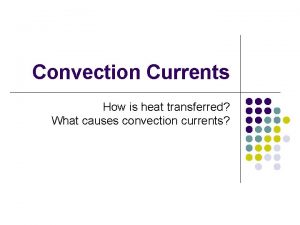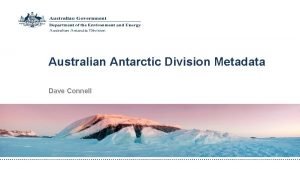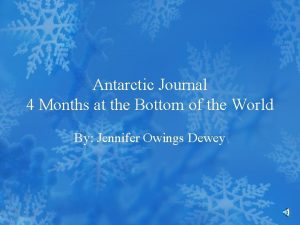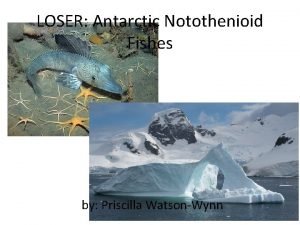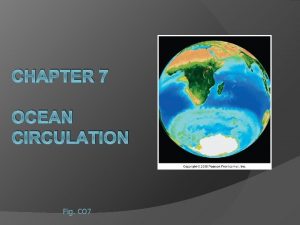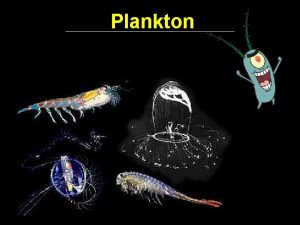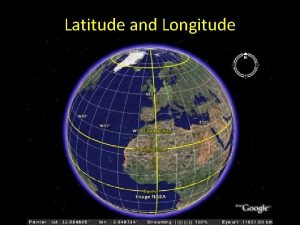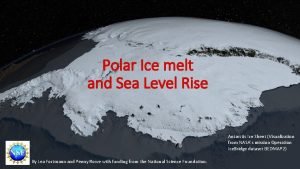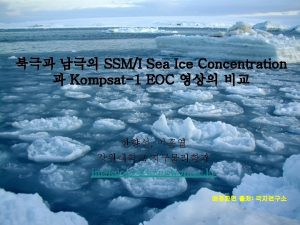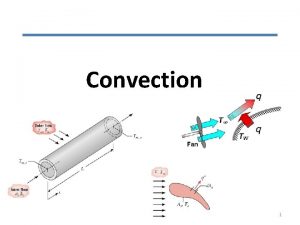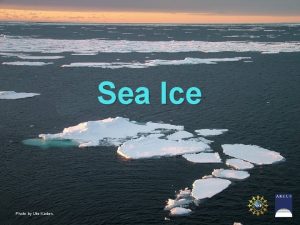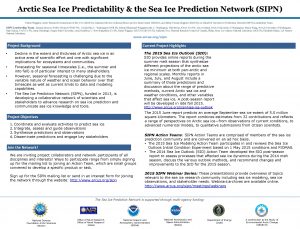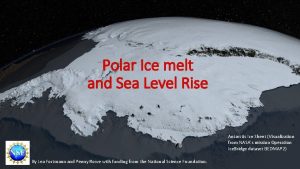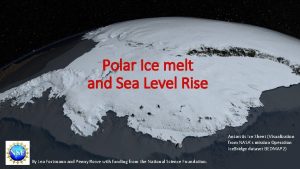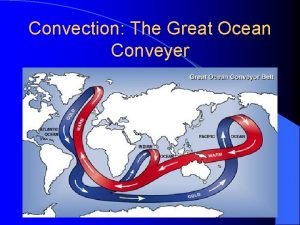Antarctic sea ice and ocean convection in Hi















- Slides: 15

Antarctic sea ice and ocean convection in Hi. GEM run xbylr John King, Amna Jrrar, William Connolley and Hi. GEM consortium members

Antarctic sea ice area – xbylr and xciel, years 21 -70

Antarctic sea ice fraction – September, years 21 -70 Hi. GEM xbylr Observations Had. GEM xciel

September ice fraction – years 1 – 12 xbylr xciel

September ice fraction – years 13 – 24 xbylr xciel

• Why does ice disappear in Weddell and Ross in xbylr ? • Why does ice recover in Weddell but not in Ross ? • Why don’t we see this behaviour in Had. GEM or in other Hi. GEM runs? • Does this tell us anything about the behaviour of the Antarctic sea ice system in reality? • Does it matter? • Can we fix it?

“Great Weddell Polynya”, 1974 -76

xbylr Potl. Temp. Ross Sea, 195 E, September 1978 1990 2018 xciel

xbylr Potl. Temp. 70 S, 195 E, September xciel Note: Ocean-atmosphere heat flux of 60 W m-2 translates to 0. 11 K/yr cooling of the 4000 m water column

xbylr Potl. Temp. Weddell Sea, 20 W, September 1978 1990 2018 xciel

Month Upper ocean salinity in Ross and Weddell Seas (plot from James Harle)

xbylr Annual mean thermodynamic sea ice thickness increment 2004 -2011 Difference xciel

• Why does ice disappear in Weddell and Ross in xbylr ? - Deep convection develops as a result of salinification. Could be caused by excess ice production, deficit in P-E, advective transport or excessive upwelling/mixing of warm, saline waters. Jeff Ridley suggests that sea ice salinity used in the model is much lower than Antarctic observations – but this would cause problems in all models. • Why does ice recover in Weddell but not in Ross ? - James Harle: Weddell Sea circulation advects ice into polynya, eventually freshening upper ocean sufficiently to stabilise convection. • Why don’t we see this behaviour in Had. GEM or in other Hi. GEM runs? -Not sure. Dave Stevens suggest that runs initialised form Levitus may be more prone to this kind of behaviour, as observations are biased towards the more saline conditions prevailing during the 1980 s. Dave also suggests GM mixing parametrisation in Had. GEM may prevent deep convection setting in. Is the higher-resolution ocean of Hi. GEM more prone to convection? • Does this tell us anything about the behaviour of the Antarctic sea ice system in reality? -Maybe of some relevance to 1970 s Weddell Polynya.

Does it matter? • Open-ocean deep convection results in unrealistic SO density structure and causes the ACC to accelerate • Better representation of Antarctic sea ice will be crucial for future applications of the model (e. g. IPCC AR 5 runs, coupling to biogeochemistry)

Can we fix it? • Essentially an ocean model problem (but it would be interesting to see a run with a different sea ice model to confirm this) • Need to examine all terms in the upper-ocean salt budget for the Weddell and Ross seas to identify the source of the problem • There may be a fundamental problem – ocean model needs to form deep water somehow and the processes by which this occurs in the real world (continental shelf convection, sub ice-shelf interactions etc. ) are not properly represented in the model, which is then forced to form deep water by unrealistic open ocean convection. (Why does Had. GEM behave differently? )
 Convection currents ocean
Convection currents ocean What causes convection currents in earth's mantle
What causes convection currents in earth's mantle Antarctic pearlwort
Antarctic pearlwort Australian antarctic data centre
Australian antarctic data centre Journeys antarctic journal comprehension test
Journeys antarctic journal comprehension test Tom crean antarctic explorer
Tom crean antarctic explorer Nototheniod
Nototheniod Heroic age of antarctic exploration
Heroic age of antarctic exploration Antarctic circumpolar current
Antarctic circumpolar current Plankton in real life
Plankton in real life Is the equator a line of latitude
Is the equator a line of latitude Antarctic expedition
Antarctic expedition Antarctic toothfish price
Antarctic toothfish price Antarctic journal four months at the bottom of the world
Antarctic journal four months at the bottom of the world Nekton include all animals that
Nekton include all animals that Convergent boundary definition
Convergent boundary definition

